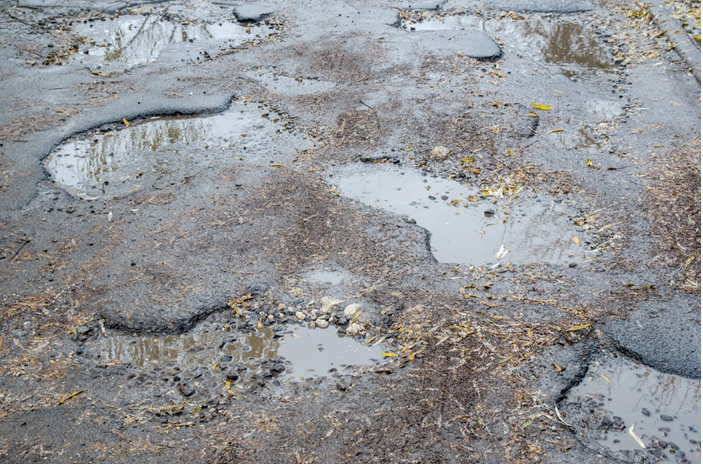
Storm water is a problem when it comes to many roads and trails. Often lingering for hours and days it would seem, the pooling of water that makes it hard to discern how deep a pot hole may or may not be. Tracks often becomes an issue as well, making roads much more slick then normal and in some cases causing hydroplaning of the road. This constant exposure to moisture erodes the road over time, continuing this trend of degradation. So, how can we prevent this issue, can we change nature from doing what it does? No, but, that doesn’t mean we can adjust to these conditions and overcome them, with the help of a few options and foresight to prepare for this common problem. Now what are some of these options we can employ for our stormwater management needs?
The simplest way is to just constantly maintain all paved surfaces to a high degree. Though unfortunately, this method is costly and time consuming and like all drivers, no one likes to deal with road construction. If we repaired roads every other year for example. There would almost be a constant construction and taxes would be a lot higher. Now disregarding that option, are there others?
Yes, instead of fixing preexisting roads. Find different ways to build roads can save a lot in the long run. There is fairly new method of paving that have become more popular. This one is called permeable paving. Which like its name states, is permeable to liquid and is able to let it pass through. This type of pavement can be a great alternative to constant repair bills.
Though how does it work? Simply, it doesn’t emulate methods like asphalt. Instead it is a plastic sheet that are strengthen by holding individual cups of filler material, things such as grass, dirt and gravel. Being placed extremely close to each other, stabilizes the ground and with a both sides of the sheet being open, allows water to pass through uninhibited. Now water has a way to seep into the ground instead of being housed on the surface. The only issue left to worry about is surface traction. Since the top layer of soil is self-contained in individual pots, the ground cannot simply be dug up by tires or foot traffic. This helps avoid getting dug in a mud hole or having the road degrade. Now, this method of paving really shines on reinforcing unimproved roads or residential areas. This method has also been used as a cheaper alternative for non-highway roads and parking lots.
Another benefit of this kind of system is the lack of maintenance and repair. Not having a broad surface to erode away, damage by weather is minuscule at best. Then paired with a long life span reaching over fifty years in some cases. Overall, permeable pavements are ideal for areas that can see a lot of rain throughout the year. It’s fairly cheaper cost and quick construction, makes this a look when dealing with excess storm water.



